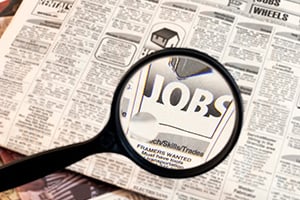 The most important economic report—the jobs report—came out this morning, and it was surprisingly strong. This strength was not so much in the headline number, but in the details. Let’s start out with the headlines and drill down to what this report means for the economy going forward, especially in light of the ongoing pandemic.
The most important economic report—the jobs report—came out this morning, and it was surprisingly strong. This strength was not so much in the headline number, but in the details. Let’s start out with the headlines and drill down to what this report means for the economy going forward, especially in light of the ongoing pandemic.
Positive Signals
Job growth. The total number of jobs created came in at 638,000, which was below last month’s 661,000. On the surface, that result doesn’t seem great. That comparison, however, ignores the effect of 147,000 Census workers, who were on the rolls last month and not this month. Taking account of that, job growth actually ticked up significantly.
Private employment. Job growth was not the only positive signal. Job losses came from the government sector, including the Census, and from state and local education employment. Private employment did much better, up by 907,000, which was better than last month’s 877,000 increase and well above expectations. Private employment is still healthy.
Household numbers. All of these numbers come from what is called the establishment survey, which looks at businesses. But there is also another survey, called the household survey. It appropriately surveys households and is the source of the unemployment rate numbers. This survey showed a gain in jobs of 2.2 million, well above the already strong establishment survey numbers, which took the unemployment rate down from 7.9 percent to 6.9 percent. Either way you look at it, the jobs numbers were surprisingly good.
Hours worked. The good news continues when we get further into the weeds. One way of measuring labor demand is by hours, not jobs, as sometimes companies work (and pay) existing employees longer rather than hiring. The hours worked number rose again, which means that total labor demand rose by the equivalent of tens of thousands of jobs. Even the weaker sectors (e.g., hospitality and leisure) showed strong gains relative to August, and other pandemic-affected sectors (e.g., retail and construction) also did much better.
Is the Economy Adapting to the Pandemic?
Overall, this was a strong report, much more so than might have been expected given the rising infection counts and ongoing third wave of the pandemic. The economic recovery is considerably more resilient in the face of the pandemic than we thought only a couple of months ago.
Beyond the immediate numbers, this report is also more evidence for something I have recently started to look at: whether the economy is adapting to the pandemic. The fact that job gains have held up and even bounced back this past month, even as the third wave is underway, provides support for that idea. The fact that private job growth and the household numbers are even stronger is further support, as those are the sectors best equipped to adapt quickly. We are now about eight months into the pandemic, and it makes sense that companies and households are adapting to the new reality.
So what does that mean? The biggest implication is simply that, from an economic standpoint, the third wave doesn’t matter that much. If so, that explains some of the much-better-than-expected corporate earnings news and the market’s run-up. If we have a sustainable recovery here, then both of those outcomes make a lot of sense.
Not Out of the Woods Yet
There are still big risks out there, the biggest of which is an income cliff at the end of the year, when many supportive economic programs expire. We need to watch for those. But it is to say that what we are seeing in the medical news is very likely not as good an indicator of the economy as we thought. If the economy can keep recovering even as the pandemic continues, then the damage might be less severe—and less long lasting. As investors, that is a reassuring idea.


 Print
Print

